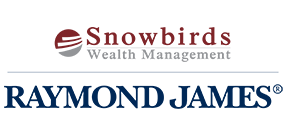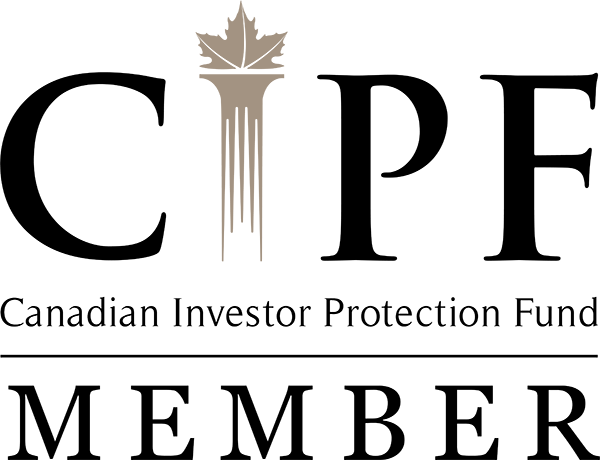Understanding Cost Basis A Guide for US Investors Relocating to Canada
Written by Matthew Irving BBA, Investment Representative
Moving across an international border, uprooting your life as a result, comes with a lengthy checklist: new home, new schools, new healthcare system all key parts of a move. What about your investments? Whether you’re a U.S. citizen or green card holder heading to Canada, what you can and cannot do with your U.S. investment accounts could cost you – or worse, leave your new Canadian advisor scratching their head.
One detail we constantly see overlooked but is so critical? Your cost basis. Many of you are probably asking, what is a cost basis? It is the original value of your investments, and how it is tracked can be drastically different between the two countries. If you are not careful, you risk being taxed twice over when you don’t have to – or you may struggle to prove what price you purchased your investments for in the first place.
Here, we will break down:
- U.S. Tax: How Cost Basis Works and How to Track It
- Example: Moving a U.S. Brokerage Account to Canada
- The Partial-Share Dilemma: DRIPs and Cross-Border Transfers
- Canadian Tax: Understanding the “Step-Up” in your Investment Cost Basis
- Example: Green Card Holder leaves Amazon USA to work at Amazon Canada
- Takeaways
U.S. Tax: How Cost Basis Works and How to Track It
In the US, the IRS by default tracks the original cost of your investments using a method called first in, first out (FIFO). Essentially, when you sell part of an investment – like a stock – the shares your purchased first are sold first, no matter which ones you actually sell. Whilst FIFO is the default method, it is far from the only option. Other methods to track your cost basis include:
- Last In, First Out (LIFO)
- This method sells the most recent purchase of a particular stock first, and is used by some investors to defer realizing the higher capital gains that typically come with older stock purchases.
- Specific Share Identification
- This method allows investors to select which specific shares to sell. Used by many investors in an effort to minimize realizing capital gains in the short-term.
- Average Cost Basis
- Specifically used for mutual funds and ETFs, this works similar to how Canada tracks cost basis by using the weighted average price of all purchases in a specific investment.
Canada tracks your cost basis differently, as it is generally calculated as the weighted average price of all your purchases of that identical investment.
To keep on top of this in the U.S., you will want to track what is called “tax lots”, a breakdown of each stock purchase, including the date, number of shares, and price. Most U.S. brokerage firms include this on your account statement, but don’t assume they will be there permanently. If you are planning a move across to Canada, contact your investment advisor and ask for a statement containing a full list of these tax lots.
To ease the burden of tracking these costs, contact a Raymond James Cross-Border advisor, as they are licensed to manage your brokerage account whilst residing in the United States. The cross-border advisor can transfer your existing U.S. brokerage account to Raymond James (USA) Ltd. Upon your move to Canada, you then transfer your brokerage assets in-kind to a Canadian Raymond James brokerage account. This allows your Raymond James advisor to obtain the cost basis information electronically and avoids the unnecessary headache of having to obtain this information from your previous financial institution or old brokerage statements.
Example: Moving a U.S. Brokerage Account to Canada
Let’s meet Ben. He is a dual citizen of Canada and the United States, moving back to Canada after spending the previous 20 years living and working in the United States. He holds a large US-based investment account. As a result, he will have to transfer the accounts to a Canadian Investment Firm. Here’s how this works out from a logistics perspective:
- Ben’s investment account holds US Stocks and Corporate Bonds, which are all transferrable to Canada.
- Ben will need to find a firm that will produce US Tax Slips, as he is still a US Citizen and will need to file a U.S. Tax Return.
- Before Ben moves his account, he needs to confirm with his US advisor what he paid for each of his stocks. The advisor can provide him with an account statement displaying the price, date and quantity for any stock or bond he purchased, known as “tax lots”.
- At the same time, Ben should ask his US advisor to sell all partial shares of stock in his account, as only full shares can transfer across the border.
- When Ben finds a new Canada-based investment advisor, he should provide this account statement to them. Missing cost information on your investments may result in your tax return filing treating a stock you sell as one you purchased at $0, a situation to be avoided at all costs.
The Partial-Share Dilemma: DRIPs and Cross-Border Transfers
Dividend reinvestment plans (commonly known as “DRIPs”) are an effective way for many investors to receive their dividends in stock rather than cash. However, if you are enrolled in a DRIP, you will often receive a fractional share.
Here’s the issue:
- U.S. firms issue partial shares when reinvesting dividends.
- Canadian firms will not accept partial shares when an account is transferred across the border. Only full shares will be eligible to transfer.
What should you do?
- Before your move, contact your U.S. financial advisor and ask that they sell off any partial shares held in your account. This will avoid unnecessary headaches down the road, for you and your Canadian advisor, who will be working to reconcile your investments.
Canadian Tax: Understanding the “Step-Up” in your Investment Cost Basis
When reporting your investments to the Canadian Revenue Agency (CRA), it’s important to understand that contrary to the United States, Canada will only tax your investments once you are a tax resident of the country.
From a Canadian tax perspective, the day you crossed the border into Canada and become a tax resident is considered your “date of purchase”. This is called the “Step-Up”.
To put it simply, the fair market value of your investments on the date you establish tax residency in Canada is considered your new “adjusted cost base”.
Make sure you communicate this date to your Canadian advisor to avoid paying tax twice on the same investments.
Example: Green Card Holder leaves Amazon USA to work at Amazon Canada
Let’s take a look at Kenny. After working at Amazon in the USA for six years as a green card holder, he is returning to his homeland of Canada and surrendering his Green Card. While working in the U.S., Kenny was awarded 300 shares of Amazon stock as part of an Employee Stock Ownership Plan (ESOP). Since Kenny received these shares as a United States resident, he did not owe Canadian tax on these shares during that time. Upon the date of his return to Canada on June 20th, 2024, Kenny became liable to pay Canadian tax on these shares if he were to sell them and realize a capital gain. From a Canadian tax perspective, the date Kenny became a Canadian tax resident becomes the new purchase date for these shares – a process known as the “Step-Up” – which resets their cost basis to the market value of the shares on that date. Consider the following:
|
Original Purchase Price of Amazon shares (received through ESOP) |
$145 USD per share (Total cost: $43,500) |
|
CAD/USD FX Rate (June 20, 2024) |
1.3706 |
|
Date of entry into Canada |
June 20, 2024 |
|
Market Value per share at end-of-day on June 20, 2024. |
$186.10 USD ($255.0687 CAD) |
|
“Stepped-Up” Cost of Amazon shares |
$55,830 USD ($76,520.60 CAD) |
On March 3rd, 2025, Kenny sells 50% of his Amazon stock at $205.02 USD per share ($296.0694 CAD). This sale results in a capital gain of $6,150.10 CAD– less than what Kenny would have owed without the “Step-Up” adjusting his cost basis. As the “Step-Up” applies to Canadian tax returns only, it is important to note that a large fluctuation in the exchange rate as shown above, can lead to a taxpayer realizing a substantially greater (or lesser) capital gain than what is displayed in that stocks base currency.
Takeaways
Here are three key takeaways from working with clients facing the tax consequences of crossing the border:
- Keep track of your stock purchases: As Canada and the United States use different electronic tracking systems, maintaining a record of your investment purchases – either from account statements or from a personal spreadsheet – makes it much easier for your Canadian investment firm to provide accurate tax slips to you and your accountant when filing.
- Record your date-of-entry into Canada: Your arrival into Canada marks the start of your Canadian tax residency, allowing you to “Step-Up” your investment cost basis to the market value on that date-of-entry.
- Sell off any partial shares in your investment account before you arrive in Canada: Contact your U.S. financial broker and ask them to sell any partial shares of common stock or ETFs in your account, as partial shares will not transfer to Canada, and can complicate cost tracking of your investments.
Working with a dual licensed Raymond James cross border advisor in advance of your move can pay dividends. Simply transferring your brokerage assets to Raymond James (USA) prior to your move will ensure the clean transfer of your cost basis information when you move the assets to a Canadian brokerage account to meet regulatory requirements.
About Snowbirds Wealth Management
Gerry Scott is a portfolio manager and founder of Snowbirds Wealth Management, an advisory firm focussed on the cross-border market. Together with Dean Moro, Carson Hamill and Matt Irving, associate financial advisors with Snowbirds Wealth Management, they provide investment solutions for Americans living in Canada, and Canadians residing in the United States. Licensed in both Canada and the US, they provide tailored investment solutions to minimize the tax burden when moving assets across borders.To schedule an introductory call, please click here.
Statistics and factual data and other information are from sources RJLU believes to be reliable but their accuracy cannot be guaranteed. It is for information purposes only and is not to be construed as an offer or solicitation for the sale or purchase of securities nor is it meant to replace legal, accounting, taxation or other professional advice. We are not tax advisors and we recommend that clients seek independent advice from a professional advisor on tax-related matters. The information is furnished on the basis and understanding that RJLU is to be under no liability whatsoever in respect thereof.
Raymond James (USA) Ltd. advisors may only conduct business with residents of the states and/or jurisdictions in which they are properly registered. Investors outside the United States are subject to securities and tax regulations within their applicable jurisdictions that are not addressed on this site. Raymond James (USA) Ltd. is a member of FINRA/SIPC.




